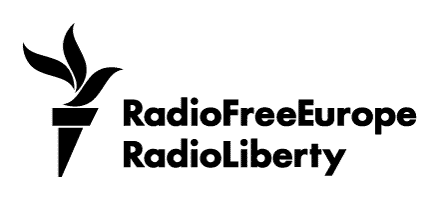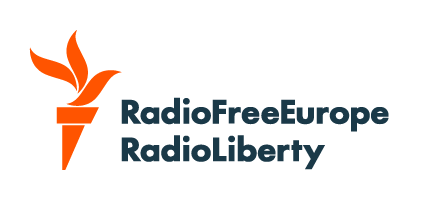CPJ criticizes probe of journalist Sheremet's death:
By RFE/RL
A Committee to Protect Journalists (CPJ) report is critical of a Ukrainian investigation into the killing of journalist Pavel Sheremet, with no arrests in the case and more questions than answers nearly one year after his car-bomb death in Kyiv.
The report, Justice Denied: Ukraine Comes Up Empty In Probe Of Pavel Sheremet's Murder, suggests an independent investigation is needed, as Ukrainian officials have provided no evidence to back claims that Russia was behind the assassination and to ensure a complete probe into possible Ukrainian involvement.
"Authorities say they are committed to solving Sheremet's murder," Nina Ognianova, CPJ's Europe and Central Asia program coordinator, writes in the introduction to the report. "But [they] offer no clear evidence to back their primary line of investigation of Russian involvement."
The report, written by Kyiv-based reporter Christopher Miller, an RFE/RL correspondent, adds that "a greater amount of circumstantial evidence points to a Ukrainian trace [in the killing], raising questions about why authorities are pushing the Russian narrative and whether they may be covering up evidence to protect someone powerful."
Sheremet, 44, was a well-known reporter who had worked at prominent media outlets in Belarus, Russia, and Ukraine during his career and was often the subject of threats and harassment for his hard-hitting journalism that was often critical of political leaders.
The native Belarusian died early on July 20, 2016, when his car blew up at an intersection a few minutes after he left his central Kyiv apartment on his way to Radio Vesti, where he had a morning program.
'Incompetence, Negligence, Sabotage -- Or All Three'
The shocking attack brought pledges by Ukrainian officials of a swift investigation. "It is a matter of honor to take all measures to solve this crime as soon as possible," Ukrainian President Petro Poroshenko said after the killing, which he called "a terrible tragedy."
But with no public announcements of progress in the case after one year, observers have blamed officials for "incompetence, negligence, sabotage -- or a combination of all three," the report says.
Interior Minister Arsen Avakov said on May 24 that one of the officers investigating Sheremet's killing had made a "mistake" that required all evidence gathered in the case to be reexamined.
The report adds that top Ukrainian police and security service officials have blamed one another for destroying video evidence crucial to the case, while Sheremet's friends, relatives, and colleagues say investigators have not thoroughly questioned them.
The report adds that the national police chief first tasked with leading the investigation resigned late last year.
And critics of the investigation point out, the report says, that a man and a woman seen on security cameras outside of Sheremet's apartment at various times in the days leading up to his death have not been identified.
The two people were also seen on video -- in disguise -- placing what is assumed to be the bomb that killed Sheremet under his car the night before he died.
Avakov said at a February press conference that the investigation indicated that Sheremet's death was a "contract killing, the order for which came from Russia." But no evidence of such a link has yet been presented.
Russian officials have rejected any involvement in the bomb attack.
History Of Attacks On Journalists
Ognianova says in the report's introduction that the CPJ is "demanding answers" about Sheremet's killing, which more than a dozen of the journalist's friends, relatives, and colleagues said they believed was carried out by Ukrainians, the report adds.
The New York-based organization says the reporter's death came during a year when the CPJ documented "attacks and hostility against journalists who covered the government critically or questioned its handling of the conflict [in eastern Ukraine] with Russia-backed separatists."
The incidents included ultranationalist groups verbally assaulting journalists and, in some cases, CPJ says, Ukrainian security officials, including Avakov, defending the actions of the attackers.
Sheremet said he and some of his Ukrayinska Pravda colleagues had been under surveillance in the months before his death, and even confronted some people stationed in cars outside his apartment on a couple of occasions.
One of the best leads in the case was the identification of Ihor Ustimenko, a former Ukrainian Security Service (SBU) agent who was seen on video outside Sheremet's apartment at the time the bomb was thought to have been planted on the journalist's car.
He was interviewed by the police but Ustimenko, who worked for the SBU until 2014, was not arrested after claiming he had been providing security for someone's children who lived near Sheremet's apartment.
Even Poroshenko said he also was "dissatisfied" with the investigation thus far. "I'm not happy that we still have not caught the killer, and he is not held accountable," he said at a press conference on May 14.
The CPJ says Ukraine has a poor record in solving the killings of journalists: it says seven Ukrainian journalists have been killed for their work since 1992, and in five of those cases no one has been convicted.
Dutch ready monument to MH17 victims:
By RFE/RL
King Willem-Alexander and Queen Maxima of the Netherlands have announced that they will join Prime Minister Mark Rutte on July 17 for the unveiling of a national monument for the victims of Malaysia Airlines Flight 17.
The flight was shot down over Ukraine in July 2014, claiming the lives of all 298 people on board. The majority of the victims, 193, were from the Netherlands.
The monument consists of 298 trees, one for each victim, planted in the shape of a ribbon and a memorial plaque.
Each of the trees will come with a memorial plaque with a name in the center.
The ribbon of trees was designed by landscape architect Robbert de Koning, while the plaque was designed by artist Ronald A. Westerhuis.
The theme of the monument will be "to live on." The unveiling of the monument will take place as the families walk through the ribbon of trees, with the king and queen walking in the front with 17 children from Vijfhuizen.
They will then meet with relatives of the victims.
Around 2,000 people are expected to come, including representatives from the other countries involved with the disaster.
This ends our live blogging for July 11. Be sure to check back tomorrow for our continuing coverage.




